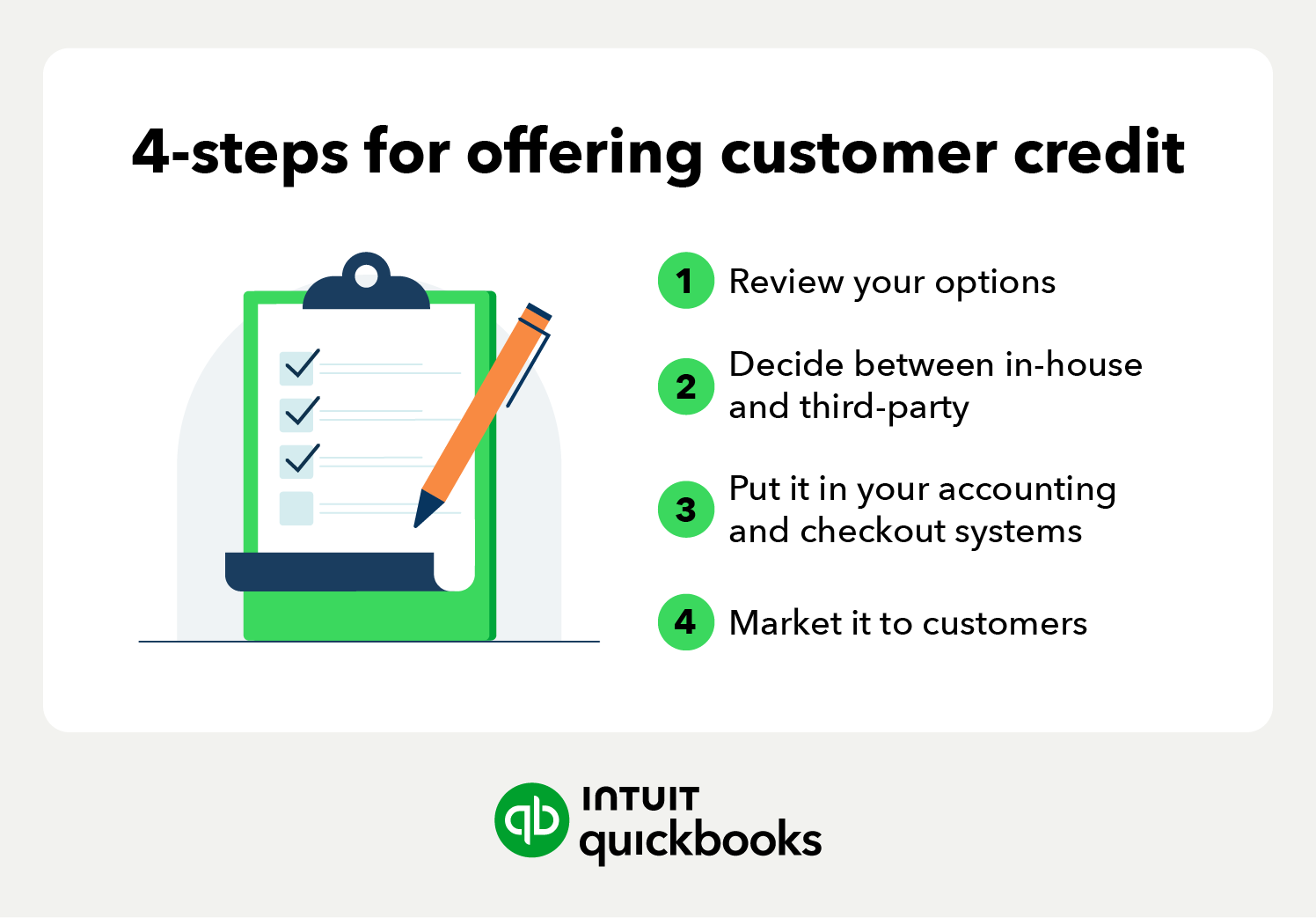By offering customer financing, businesses may attract more customers who aren’t able to afford the full cost of a product or service upfront. Additionally, customer financing, which provides an additional payment option, can help businesses increase sales.
The main options for customer financing are primary financing, which considers creditworthiness, and secondary financing, which is open to all sorts of credit. Most customer financing methods are primary financing, while secondary financing includes such services as lease-to-own arrangements.
(In-house) financing
In-house financing is where a business acts as a creditor and offers its own financing program to customers. This is a more involved process for the business than third-party financing.
For in-house loans, you may need to pay costs associated with credit checks and collecting payments, which require both software and staffing. You’ll also need to develop a credit policy for your business and have a system to manage your accounts receivable.
Note that accounting software may help simplify the payment process with invoices and automated payment reminders—potentially freeing up time to focus on your business.
Third-party financing
Third-party financing refers to a type of financing where small business owners rely on a third-party provider to act as a lender at the point of sale. In most of these programs, the customer enters into a payment plan to pay off a purchase’s full amount over time, often through monthly payments.
Third-party financing companies allow a wide range of credit to be approved compared to other, more strict forms of financing. In some cases, these financing programs are interest-free, while others might assess interest charges at set interest rates.
One of the most popular forms of third-party financing is the buy now, pay later model—a form of short-term financing that’s typically interest-free. Buy now, pay later financing is a popular tool for online retailers.
The fees and expenses of third-party financing apps are typically a fixed amount per transaction (such as 30 cents) and a percentage of the sale.
For example, a $300 sale using customer financing could include a $0.30 fixed charge for you, as well as 3.29% of the sale. Thus, the fees would be $10.17, which is the $0.30 fixed charge, plus $9.87 ($300 x 3.29%).
The trade-off of these fees is that third-party financing companies handle credit checks and payment collection.















